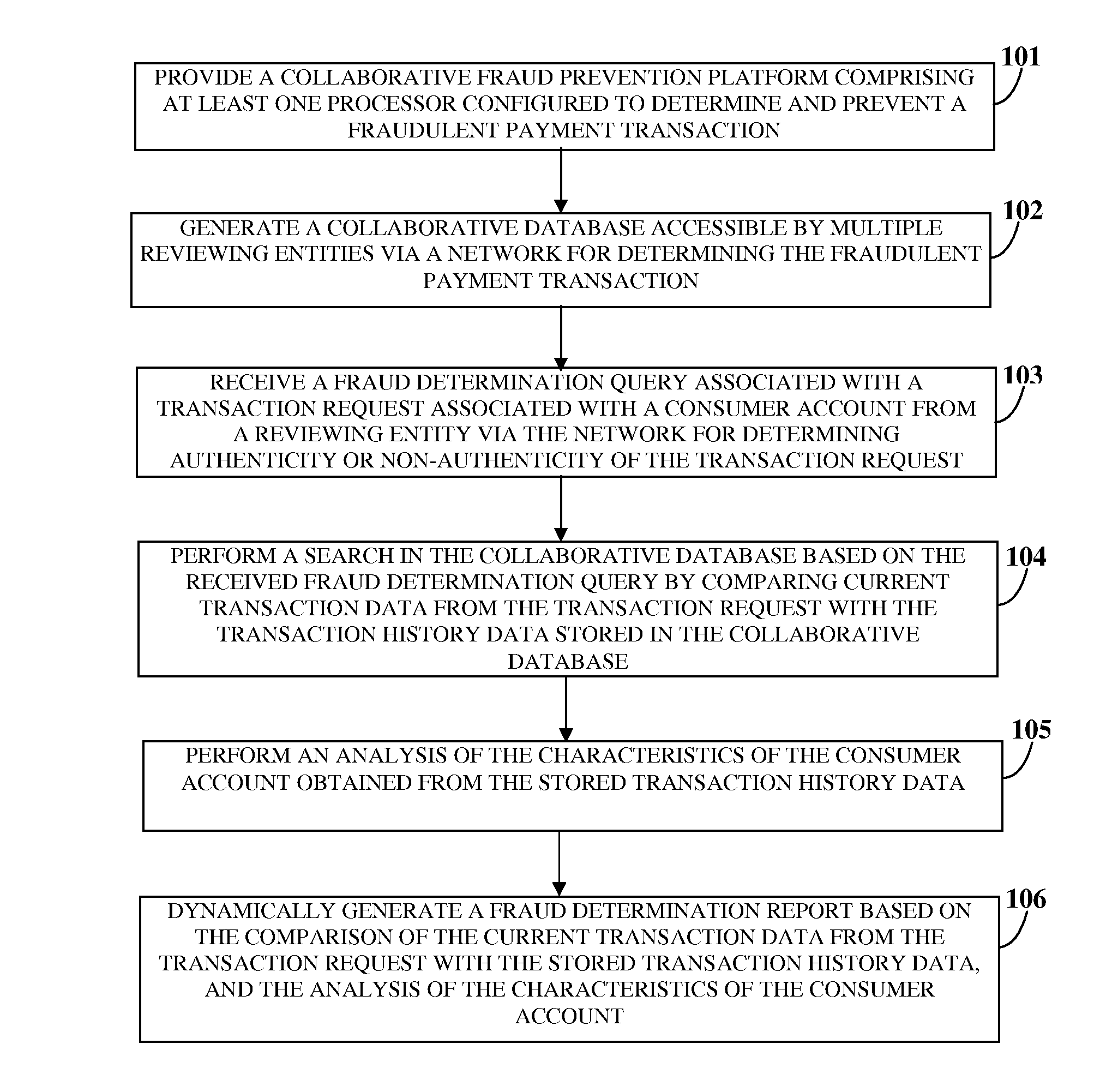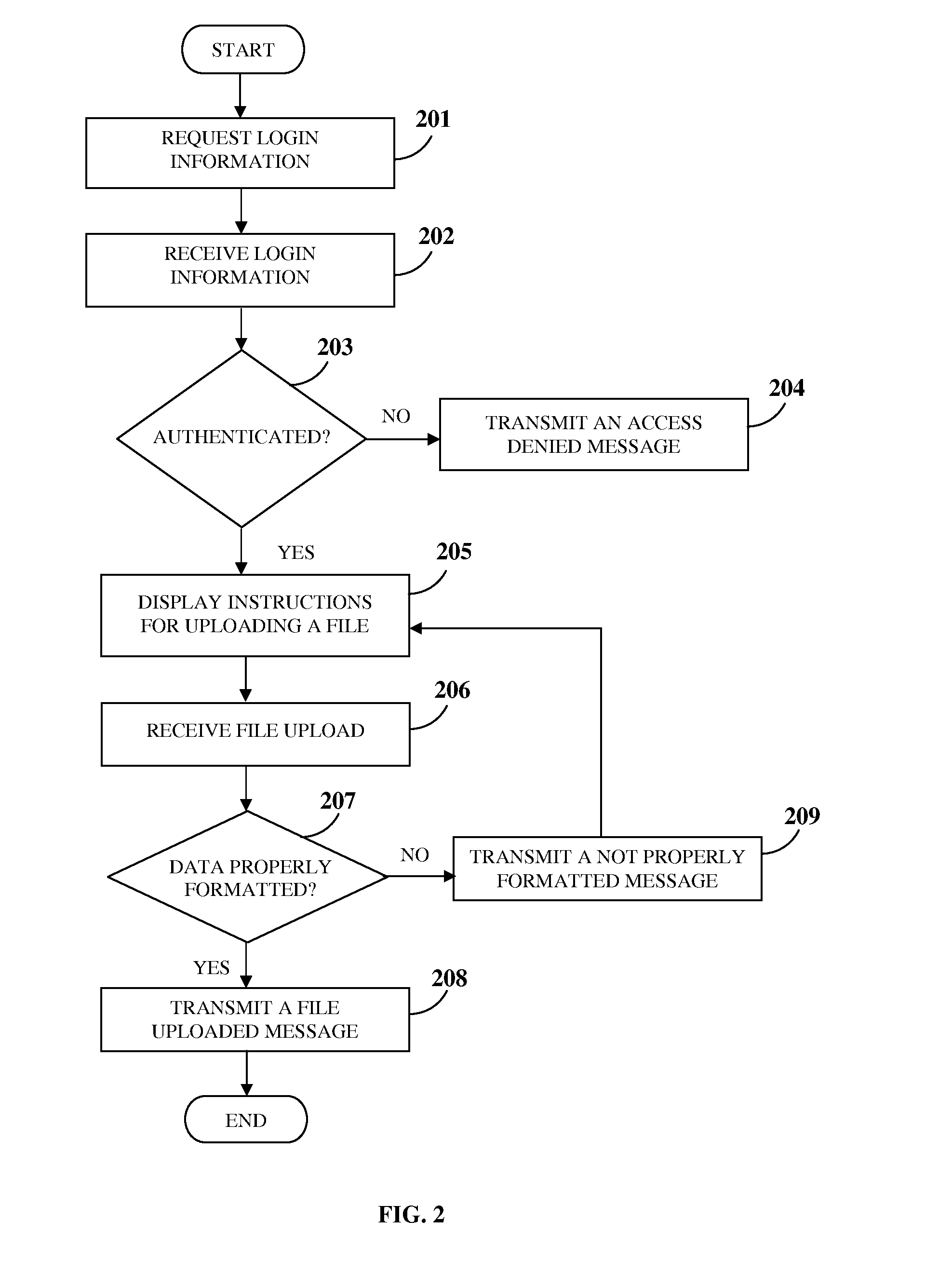Collaborative Fraud Determination And Prevention
a fraud determination and collaboration technology, applied in the field of collaborative fraud determination and prevention, can solve the problems of more than $100 billion losses, fraud continues to plague the retail industry, and the total cost of fraud reaches $510
- Summary
- Abstract
- Description
- Claims
- Application Information
AI Technical Summary
Benefits of technology
Problems solved by technology
Method used
Image
Examples
Embodiment Construction
[0032]FIG. 1 illustrates a computer implemented method for determining a fraudulent payment transaction in a collaborative environment. As used herein, the term “fraudulent payment transaction” refers to a financial transaction initiated by a fraudulent entity, herein referred to as a “fraudster” in disguise of a consumer for fraudulently purchasing a product and / or a service provided by a merchant entity. Also, as used herein, the term “collaborative environment” refers to an environment in which multiple merchant entities crowd source their data banks of transaction history data corresponding to purchases of products and / or services by consumers from the merchant entities to facilitate fraud determination and prevention. The computer implemented method disclosed herein provides 101 a collaborative fraud prevention platform comprising at least one processor configured to determine and prevent the fraudulent payment transaction. The collaborative fraud prevention platform determines...
PUM
 Login to View More
Login to View More Abstract
Description
Claims
Application Information
 Login to View More
Login to View More - R&D
- Intellectual Property
- Life Sciences
- Materials
- Tech Scout
- Unparalleled Data Quality
- Higher Quality Content
- 60% Fewer Hallucinations
Browse by: Latest US Patents, China's latest patents, Technical Efficacy Thesaurus, Application Domain, Technology Topic, Popular Technical Reports.
© 2025 PatSnap. All rights reserved.Legal|Privacy policy|Modern Slavery Act Transparency Statement|Sitemap|About US| Contact US: help@patsnap.com



